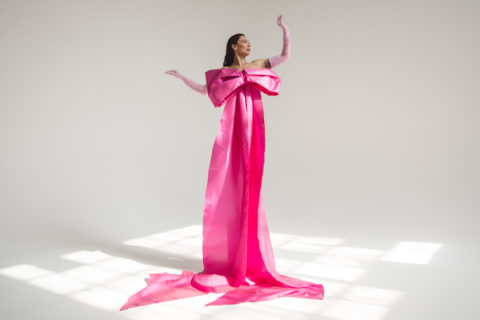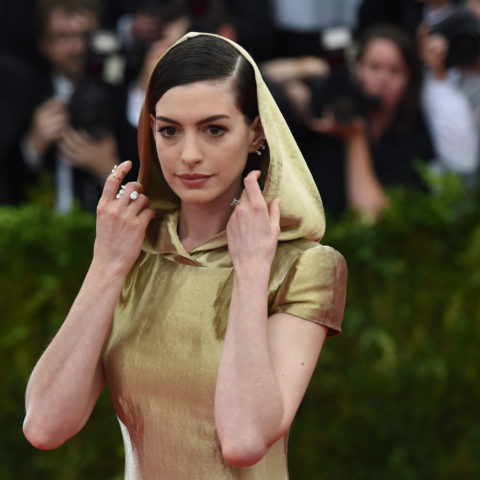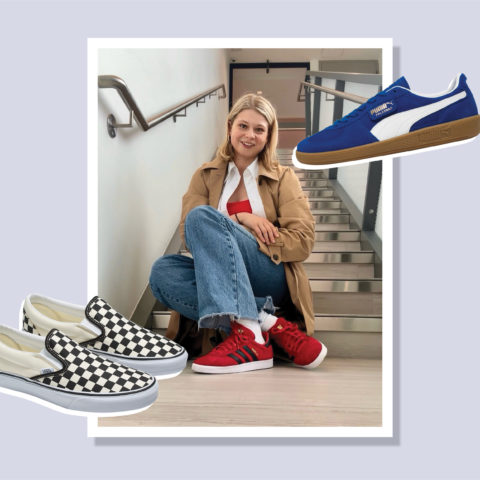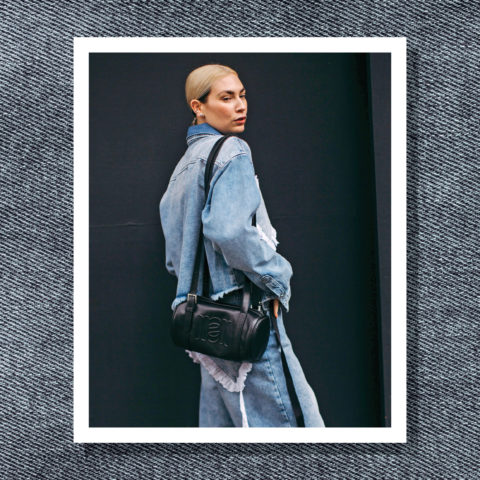Get to Know Anishinaabe Activist and Storyteller Sarain Fox
"I really only have a decade to capture as many pieces of who I am, who this world is and who our elders are before it’s all lost forever."
Anishinaabe activist and storyteller Sarain Fox has appeared on Canada’s Drag Race and in ad campaigns for Canada Goose. In her latest documentary, she turns her lens to Indigenous elders, youth and queerness. Below, FASHION spoke with Fox on the power of documentaries, dismantling binaries and life as a mother.
RELATED: Get to Know Zaldy, the Designer Dressing RuPaul
View this post on Instagram
You are an artist, an activist, an ambassador, a filmmaker and now, with the birth of your son in February, a mother of two. In all your work, the goal is about empowering Indigenous voices. Has that goal changed over time?
“I would say it has evolved. In the beginning of my career, I saw very little representation. When the Canada Goose campaign with me and my mom came out five years ago, it was the first time that multiple Indigenous people had been featured in an international billboard campaign — ever. Indigenous content wasn’t as hot as it is right now. You look at Ashley Callingbull and Quannah Chasinghorse…. When an Indigenous person has something amazing going on, we’re really seeing that get amplified now.”
Why are documentaries the best form of storytelling right now?
“When Rise [a TV series hosted by Fox] came out in 2017, I was very aware of the impact it had, how young and old people alike felt instantly seen and empowered and how non-Indigenous people felt motivated to learn more and connect. Now, the two things I’m obsessed with capturing are young people and elders. That’s not by accident. My son and my daughter only have my auntie Mary and my mother, so I really only have a decade to capture as many pieces of who I am, who this world is and who our elders are before it’s all lost forever. Man, I don’t know if many people live with that kind of pressure, but my reaction to it is to make documentaries and put them out as quickly as possible.”
View this post on Instagram
Your latest documentary, Veracity: Indigiqueer, follows Banaise-Kwe Henry, a youth from Kettle and Stony Point First Nation. What did it feel like to make this film?
“It confirmed what I’ve always known: that colonization brought the labels and English terminology about gender, and it even brought the closet, metaphorically and literally — we didn’t have closets. I also really felt the weight of the responsibility of carrying Banaise’s story. We were going to follow her as she came out to everyone, but that never happened, and I love that it didn’t. Because that’s not how it happens. These big moments happen slowly and bit by bit.”
In June, we’re celebrating Pride and National Indigenous History Month. How do you view this time, being both queer and Indigenous?
“I always call it my busiest month of the year. As I reclaim my identity more and more, I don’t separate my Indigeneity from my queerness. I want to embody Pride and Indigenous peoples month as one identity. Even in the queer community, we are starting to see more space being made and more acceptance and more curiosity about how our two communities can align with, protect and become allies for one another.”
Did you have any queer Indigenous representation to look up to?
“No. When I was 15, I moved to Toronto’s Church Street in the heart of the Village, and my protectors were all queens. So much of the magic of that moment for me and my safety was a queer community. I think less about Indigenous queerness and more like the whole scene was what I had to look up to.”
What has your own queer journey been like?
“I identify as fluid. LGBTQ2S+ is an English acronym, and I’ve really found my freedom in letting go of the colonial ideas of queerness, which have been very hurtful. Within my own family, I’ve always felt like I belong. I don’t have some big coming-out story because I just feel like I’ve always been as I am. I was exposed to queerness from a very young age — queer couples and queer families. I’m grateful for that narrative existing because I’ve always felt normal in my own skin.
“I was bullied because I’m Indigenous, so for a very long time, there was no way I was going to identify as queer because I was already fighting the othering of being Indigenous. I had to find how to blur that intersection in my own life to find freedom. I feel like society can see my queerness and accept it when I’m with a woman and they have a hard time seeing and accepting it when I’m in a relationship with a man who doesn’t identify as straight. That’s been the hardest for me, as I have the family I love.”
View this post on Instagram
You have what looks like a “traditional family” on the outside, but how should we understand that?
“Queer folks are trying to dismantle binaries, yet we are still trapped in them. For me, the only way that I can really explain this is through my Indigenous identity. I identify as a Kwe, which is the traditional Anishinaabe word for ‘woman.’ It has nothing to do with sexual identity and everything to do with who I am as a life giver. My children will have the opportunity to identify however they need, and, more importantly, my home will always be open to all human beings.”
How has the birth of your son changed your family dynamic?
“With the second baby, there’s still that joy and excitement, but it’s a little more laid-back and your priorities get very clear. That’s been a beautiful gift for me, as an artist, because it’s given me a laser focus. And then there’s the fact that I will never be on time again.” [Laughs]
Lastly, which Indigenous designers should we have on our radar?
“Right now, I’m obsessed with The Beaded Hero; she makes incredible depictions of pop culture in her beadwork. I love Emme Studio. I’ve been working with people who are more known for regalia and traditional garments, like master beader Roberta Anderson, and Michelle Reed of MReed Designs just made an incredible strap dress for me; we collaborated on the design. The strap dress really represents the first form of the garment we wore in the 1800s that was a real mixture of who we would have been and who we were becoming.”
This article first appeared in FASHION’s Summer 2023 issue. Find out more here.








